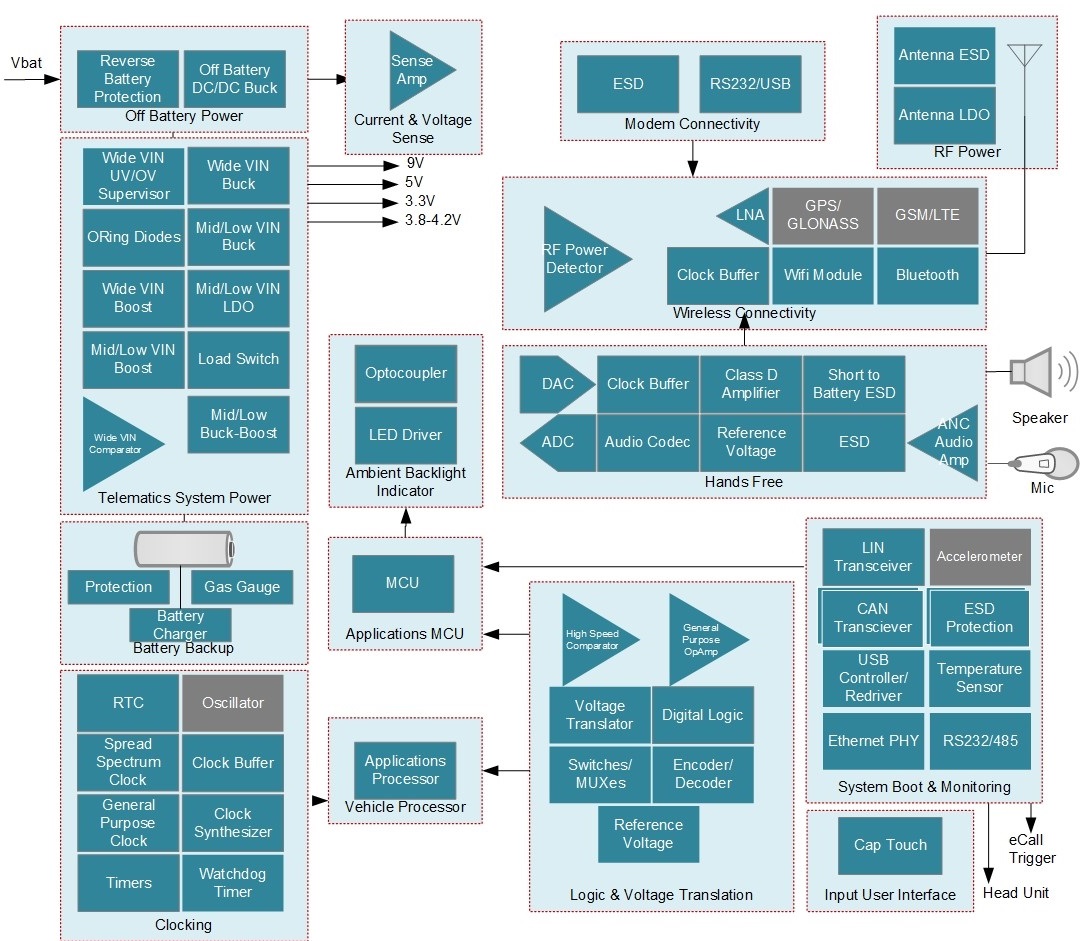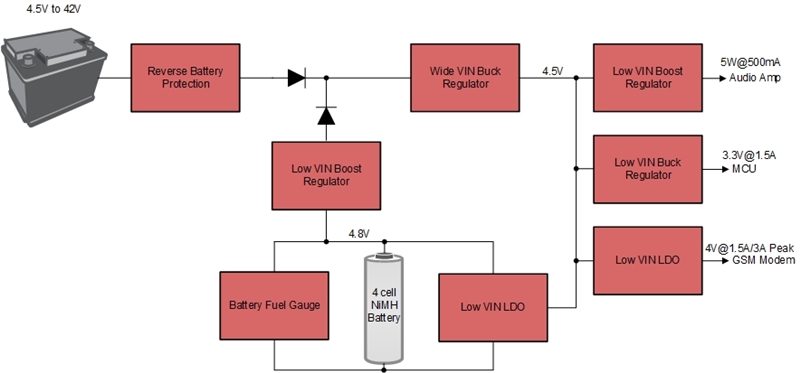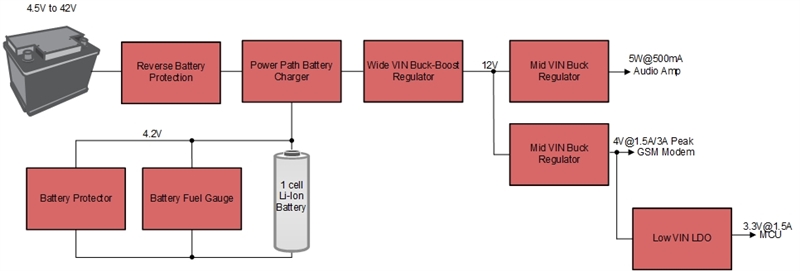SSZT633 August 2018
It may surprise you that a technology that has been around for nearly two decades has paved the way for the connected car. ECall is ancient by high-tech standards, but just this past March, the European Union mandated its inclusion of in all new cars. This law is just one example of the intersection of technology and legislation – and the delicate relationship between the two may determine how long it will be before we have fully connected vehicles.
At its most basic definition, eCall is just a basic cell phone inside a car that can automatically dial for help in an emergency; it’s technology that’s been on the market since the 1990s. Looking to the future, consumers require more advanced integration, and that’s where a telematics control unit (TCU) comes in.
A TCU provides the connected car with all the functionality of eCall and more, including sending and receiving data, such as location, over-the-air updates or phone calls. Without a TCU, eCall is only capable of making calls. Figure 1 outlines a TCU with emergency calling.
 Figure 1 Integrated Emergency Calling
in a Modern-day TCU
Figure 1 Integrated Emergency Calling
in a Modern-day TCURequirements for a Typical TCU with an Integrated eCall System
Designing a TCU has as many hardware variations because original equipment manufacturers (OEMs) and Tier 1 suppliers have their own design specifications, which place the TCU in different locations inside the vehicle.
The EU mandate specifies that eCall systems in new vehicles must be able to:
- Operate during and after a crash, automatically and without the car battery.
- Withstand extreme temperatures, even -20°C or -40°C.
- Connect an 8- to 10-minute phone call a 10-year battery lifetime.
- Provide emergency services callback on the cellular network for 60 minutes.
- Comply with International Organization for Standardization (ISO) 26262 Automotive Safety Integrity Level (ASIL) A standards.
Beginning with the Backup Battery
The backup battery is a good place to start when designing a TCU. Based on the EU requirements, a backup battery must support audio power anywhere from 6W to 20W and peak currents from a Global System for Mobile (GSM) module of around 2A (nominally 350mA).
Choosing a backup battery defines the rest of the system, depending on battery chemistry (common types include lithium-ion, lithium-ion phosphate and nickel-metal hydride), the number of cells and the current capabilities. Where the battery is placed within the power path also defines the kind of charger or low-dropout regulator you use, and whether you need a boost regulator.
Figure 2 and Figure 3 illustrate two power-path variations based on different charging schemes. Each variation accomplishes the same task with the same amount of components but with different configurations based on backup battery choice and battery charger capability.
Variation No. 1 is a low-cost, simple design, but you would have to trade off size and redundancy using multiple boost regulators. Variation No. 2 uses a lithium-ion battery that requires more protection but fewer cells. Both are feasible options, but cost, size and reliability all play a factor in picking one over the other.
 Figure 2 TCU power-path variation No. 1
Figure 2 TCU power-path variation No. 1 Figure 3 TCU Power-path Variation No. 2
Figure 3 TCU Power-path Variation No. 2Choosing Power Regulators
Once you’ve considered the backup battery, power regulators present separate design considerations. As with automotive applications, off-vehicle battery power must sustain harsh temperatures, wide input voltages and electromagnetic interference (EMI) mitigation. Telematics systems may be located in areas of a car (windshield, passenger compartment, trunk, engine) that sustain high temperatures, requiring integrated circuit (IC) junction temperatures as high as 150°C and thus good board thermals and efficiency.
Input voltages based on OEM load dump, reverse polarity and cold-cranking conditions vary, but typically start at 4.5V with peaks up to 42V. None of the switching regulators must interfere with AM and FM bands of the car radio, so the switching frequency has to be either around 2.1MHz (above the AM band and below the FM band) or approximately 400kHz (below the AM band). Choosing a switching regulator with appropriate switching frequencies, dithering/spread spectrum and optimized layouts are all key components in ensuring good EMI performance.
Amplifying Your Design with Audio
Audio power can vary widely. Some designers may choose a lower-power system on the order of 4-6W while other systems can be as high as 20W. Outside of power consumption and variation, speaker diagnostics and protection are critical functions for audio, such as open and shorted output loads and output-to-power and ground shorts, in addition to typical automotive short-circuit protections, load dump, and temperature protection and monitoring.
Considering Data Rates
Data rates connecting to head units or central gateways are increasing alongside the increasing integration of data, modems and memory storage within telematics systems. The days of just Controller Area Network, Local Interconnect Network or even USB are over, having been replaced by 10/100 Mbps and even 1 Gbps.
Anticipating the Future of Telematics
Disparate forces are at play in telematics trends, whether it’s the legislative factors described above, infrastructure requirements, user experience, driver expectations, or the fact that telematics is currently a fragmented market. Advancements in small aftermarket telematics products are to be noted such as on-board diagnostic dongles and are more advanced systems such as vehicle-to-X (V2X) modules that foster communication between the vehicle, other cars and the driving environment. These devices may have similar modems, processing, data communication as modern-day TCUs.
As I see it, one truth still stands: the future of the connected car will depend on innovation in telematics and how well automotive design engineers can answer the design challenges and keep up with the trends.
Additional Resources
- Read more in my last blog post, “Where we’re going with the connected car.”
- See SimpleLink MCUs for auto.